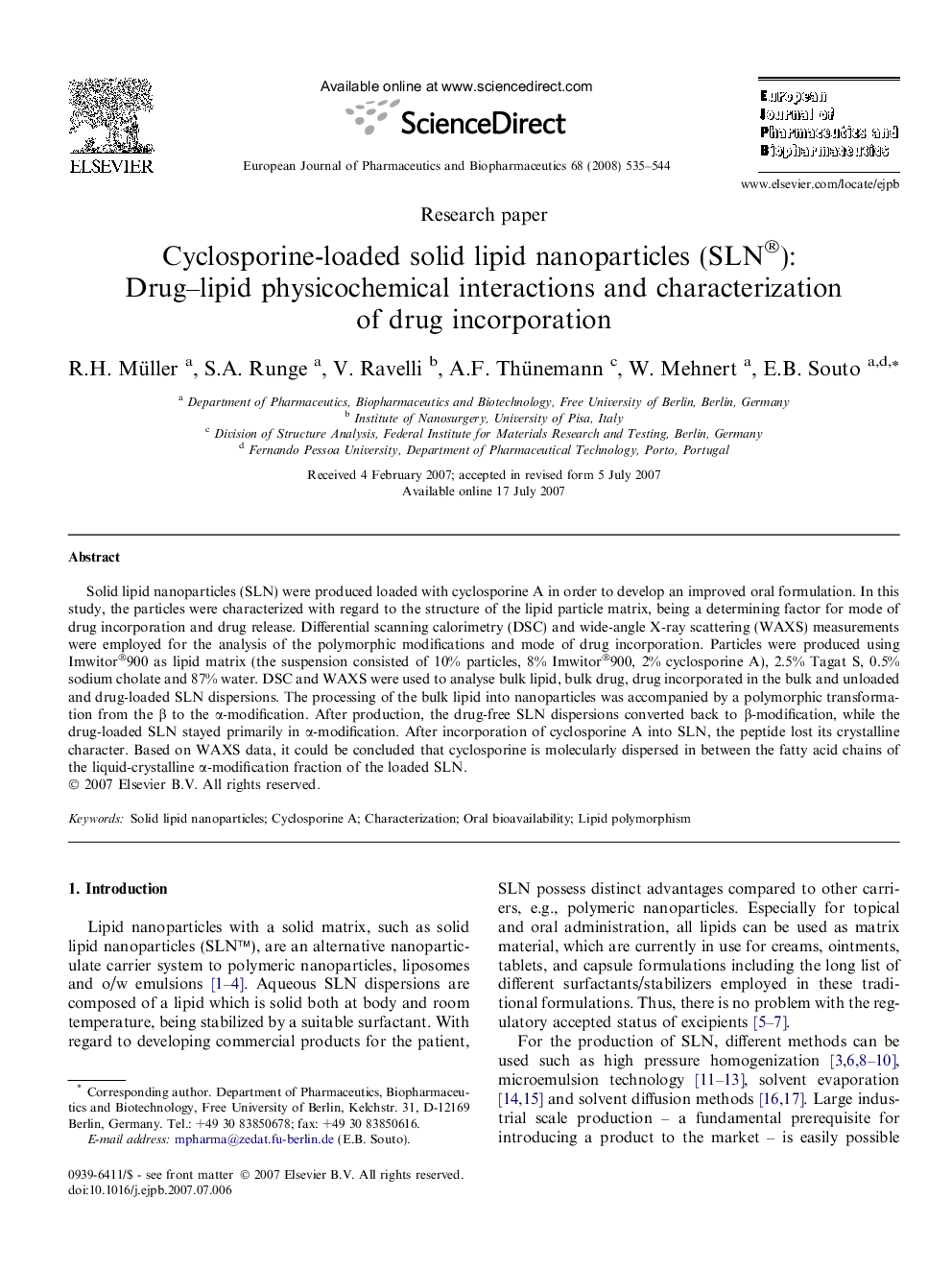| Article ID | Journal | Published Year | Pages | File Type |
|---|---|---|---|---|
| 2084865 | European Journal of Pharmaceutics and Biopharmaceutics | 2008 | 10 Pages |
Solid lipid nanoparticles (SLN) were produced loaded with cyclosporine A in order to develop an improved oral formulation. In this study, the particles were characterized with regard to the structure of the lipid particle matrix, being a determining factor for mode of drug incorporation and drug release. Differential scanning calorimetry (DSC) and wide-angle X-ray scattering (WAXS) measurements were employed for the analysis of the polymorphic modifications and mode of drug incorporation. Particles were produced using Imwitor®900 as lipid matrix (the suspension consisted of 10% particles, 8% Imwitor®900, 2% cyclosporine A), 2.5% Tagat S, 0.5% sodium cholate and 87% water. DSC and WAXS were used to analyse bulk lipid, bulk drug, drug incorporated in the bulk and unloaded and drug-loaded SLN dispersions. The processing of the bulk lipid into nanoparticles was accompanied by a polymorphic transformation from the β to the α-modification. After production, the drug-free SLN dispersions converted back to β-modification, while the drug-loaded SLN stayed primarily in α-modification. After incorporation of cyclosporine A into SLN, the peptide lost its crystalline character. Based on WAXS data, it could be concluded that cyclosporine is molecularly dispersed in between the fatty acid chains of the liquid-crystalline α-modification fraction of the loaded SLN.
